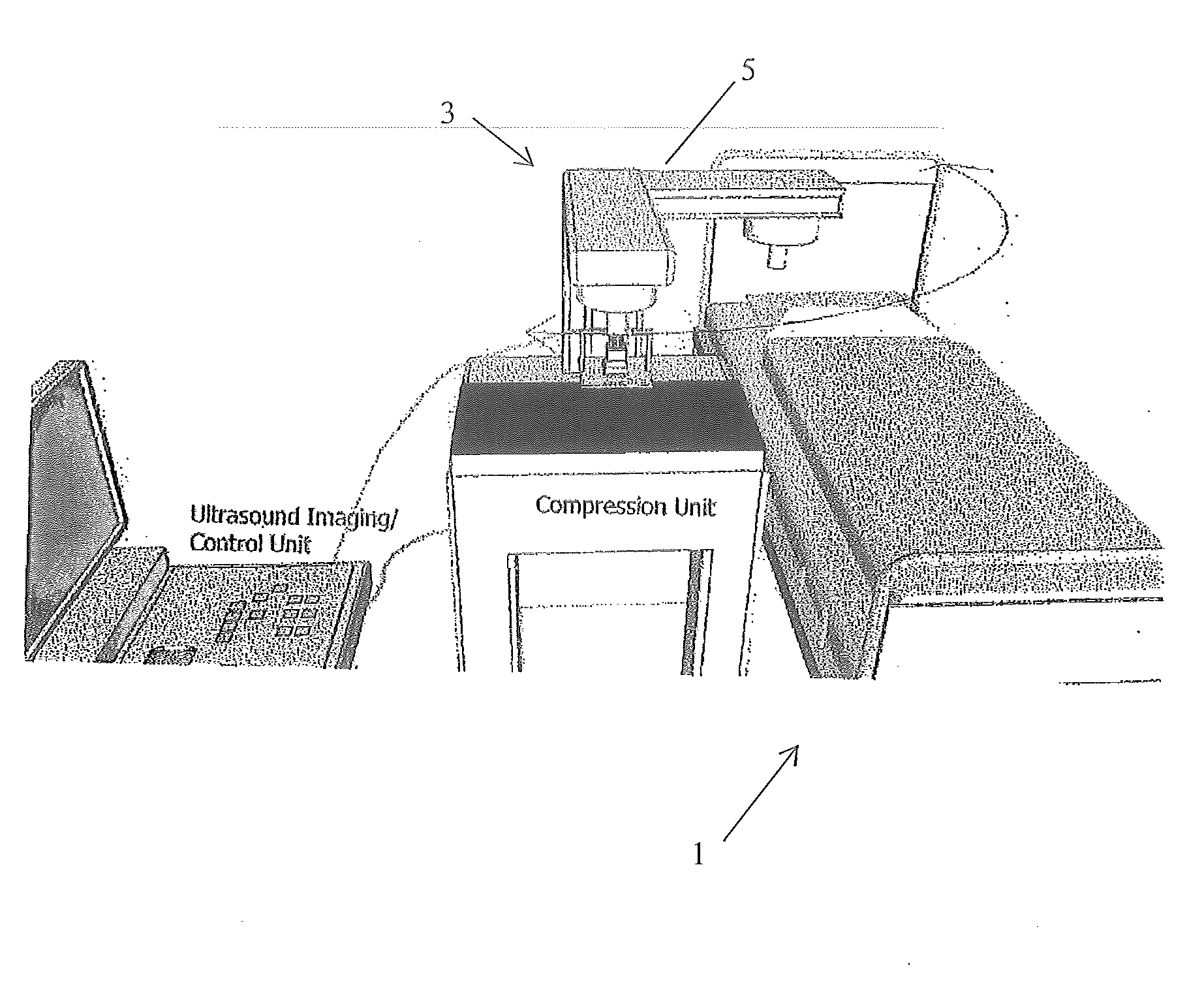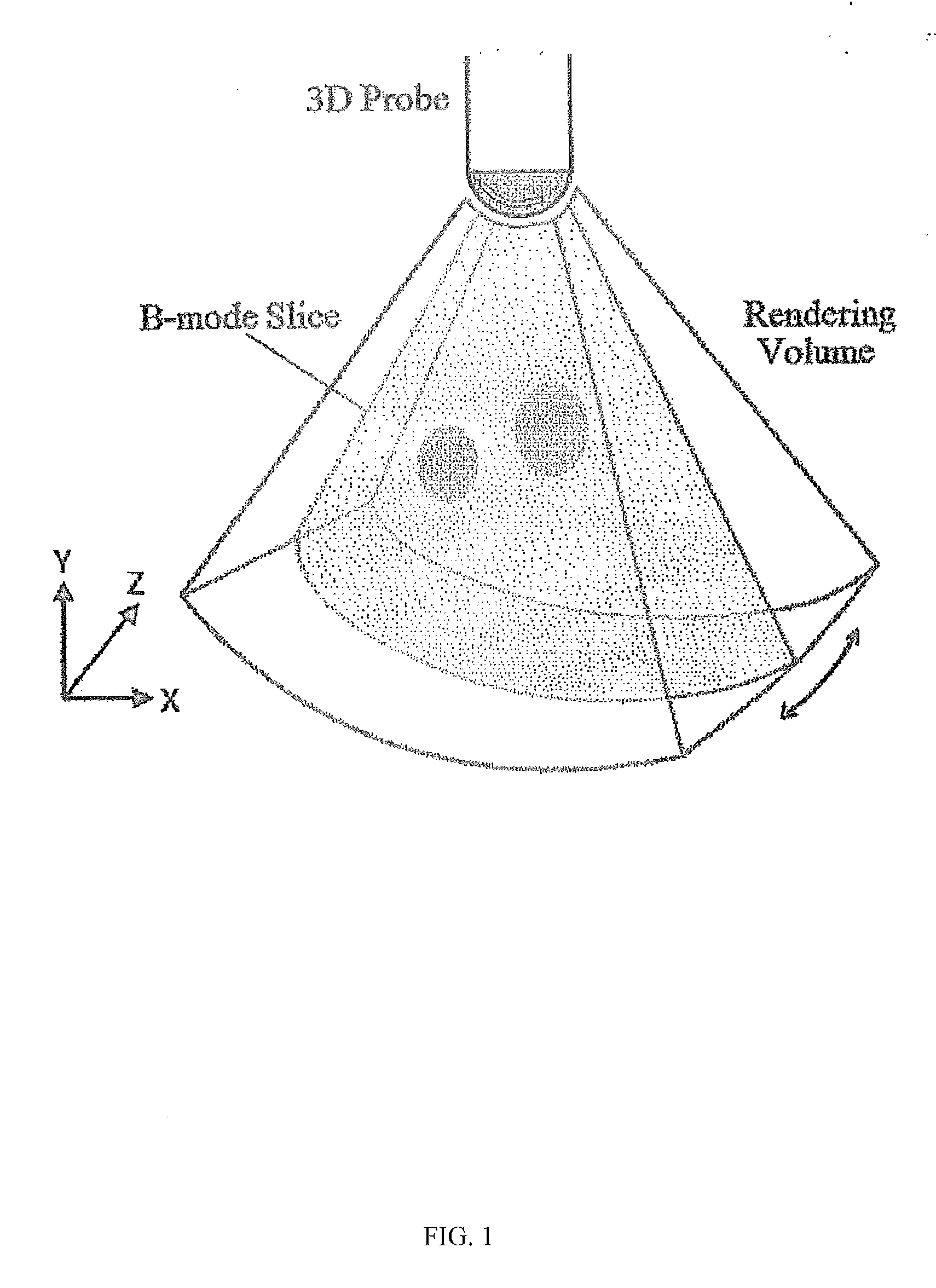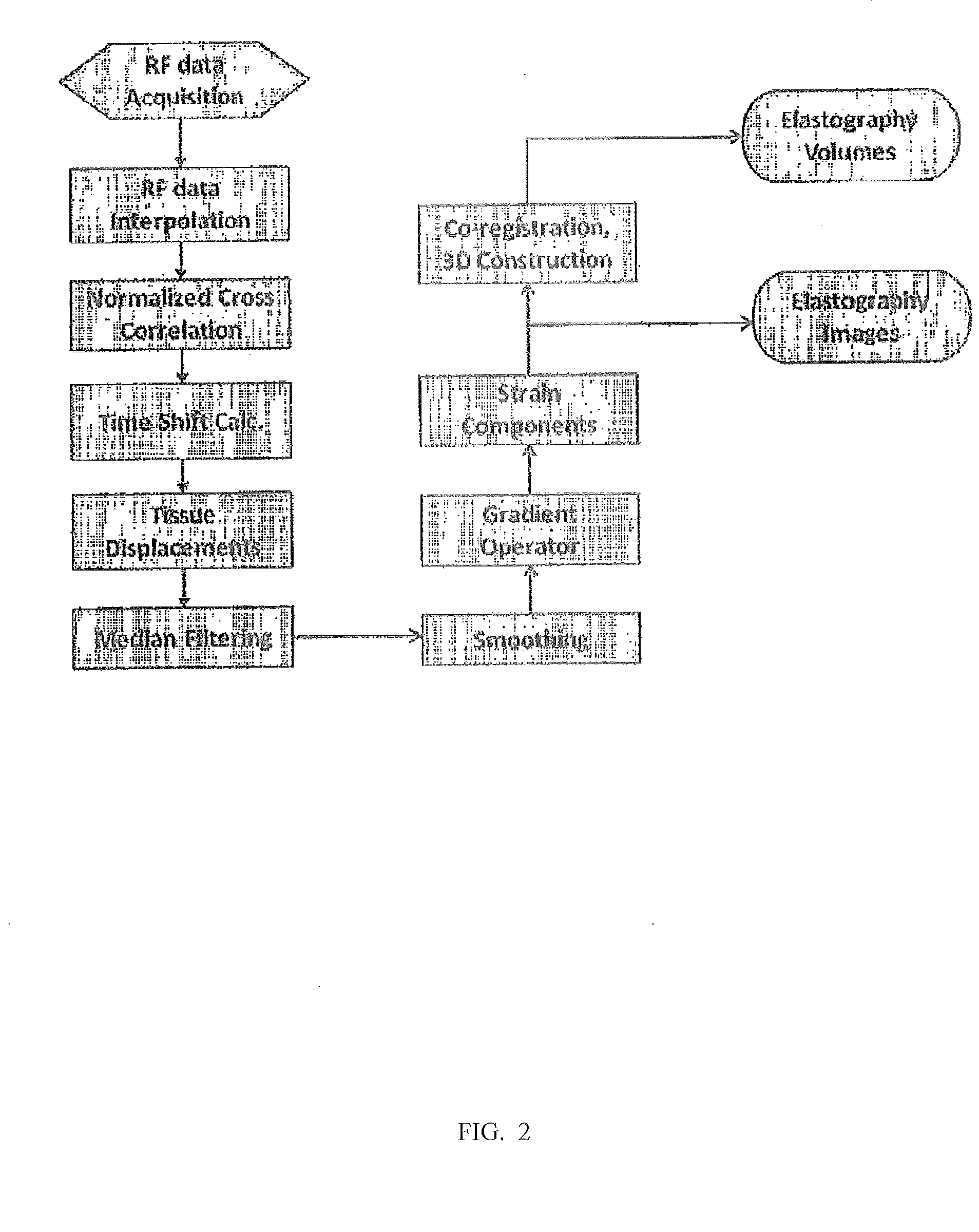System and Device for Tumor Characterization Using Nonlinear Elastography Imaging
a nonlinear elastography and tumor technology, applied in the field of human tumor noninvasive classification, can solve the problems of low specificity rate, sensitivity decline, and imaging method's disadvantage of low sensitivity and specificity rate when used alon
- Summary
- Abstract
- Description
- Claims
- Application Information
AI Technical Summary
Benefits of technology
Problems solved by technology
Method used
Image
Examples
Embodiment Construction
[0087]The present invention provides a method for classifying and characterizing a tumor of a patient as either benign or malignant comprising positioning a tissue or organ of a patient on a compression stage, aligning a 3D (three dimensional) ultrasound probe on or in the vicinity of the tissue or organ suspected of having a tumor, the probe capable of performing 3D ultrasound strain imaging (elastography), applying a first compression force to the tissue or organ having the suspected tumor for forming a first compressed tissue or organ, performing 3D ultrasound strain imaging (elastography) to the first compressed tissue or organ for estimating tissue strain, applying a second compression force to the first compressed tissue or organ, wherein the second compression force is greater than the first compressive force for forming a second compressed tissue or organ, performing 3D ultrasound strain imaging (elastography) to the second compressed tissue or organ for estimating tissue st...
PUM
 Login to View More
Login to View More Abstract
Description
Claims
Application Information
 Login to View More
Login to View More - R&D
- Intellectual Property
- Life Sciences
- Materials
- Tech Scout
- Unparalleled Data Quality
- Higher Quality Content
- 60% Fewer Hallucinations
Browse by: Latest US Patents, China's latest patents, Technical Efficacy Thesaurus, Application Domain, Technology Topic, Popular Technical Reports.
© 2025 PatSnap. All rights reserved.Legal|Privacy policy|Modern Slavery Act Transparency Statement|Sitemap|About US| Contact US: help@patsnap.com



